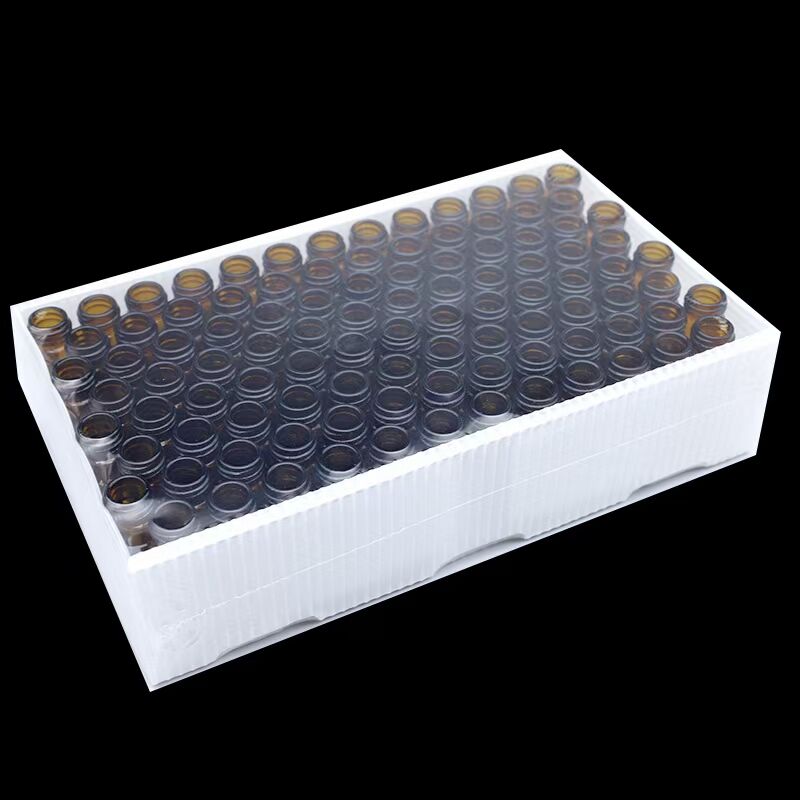Understanding the Critical Role of Sample Containers in Chromatography
In the world of analytical chemistry, the smallest details can have profound impacts on results. While much attention is given to mobile phases, columns, and instruments, HPLC vials often receive less scrutiny. Yet, these seemingly simple containers play a crucial role in maintaining sample integrity and ensuring accurate analytical outcomes. The quality and characteristics of HPLC vials can significantly influence your chromatographic results, potentially introducing variables that compromise the reliability of your analyses.
Laboratory professionals worldwide rely on high-performance liquid chromatography for precise analytical measurements. However, even with state-of-the-art instrumentation and meticulous method development, the choice of HPLC vials can introduce unexpected variables. From material compatibility to adsorption issues, these sample containers are far more than just temporary storage vessels – they are integral components of the analytical process.
Material Considerations for HPLC Vials
Glass Composition and Surface Chemistry
The glass composition of HPLC vials directly impacts sample stability and analytical performance. Type I borosilicate glass remains the gold standard for most applications, offering superior chemical resistance and minimal ion leaching. The surface chemistry of these vials plays a crucial role in preventing sample-container interactions that could affect analytical results.
Advanced surface treatments and deactivation processes can further enhance the inertness of glass HPLC vials. These treatments minimize surface silanol groups that might otherwise interact with analytes, particularly basic compounds or proteins. Understanding the relationship between glass composition and your specific application is essential for maintaining sample integrity.
Polymer-Based Alternatives
Polymer HPLC vials present unique advantages for specific applications, particularly when working with ion-sensitive samples or highly basic compounds. Materials such as polypropylene and polyethylene offer excellent chemical resistance and eliminate the risk of glass particulates. However, these materials may introduce their own set of considerations, including potential leaching of plasticizers or limited solvent compatibility.
The selection between glass and polymer vials should be based on careful evaluation of sample characteristics, analytical requirements, and potential material interactions. Each material type offers distinct benefits and limitations that must be weighed against the specific demands of your analytical method.

Design Features That Impact Performance
Closure Systems and Sealing Mechanisms
The integrity of HPLC vial seals significantly influences sample stability and analytical accuracy. Modern closure systems incorporate advanced features like pre-slit septa and screw caps with integrated seals. These innovations help prevent sample evaporation, minimize contamination risks, and ensure consistent injection volumes.
The choice of septa material deserves particular attention, as it must maintain an effective seal while remaining chemically inert to both the sample and the mobile phase. Silicone/PTFE combinations have become widely adopted, offering an optimal balance of sealing performance and chemical compatibility.
Volume Optimization and Design Elements
The internal geometry of HPLC vials influences sample recovery and injection precision. Modern vial designs incorporate features like V-bottom configurations and reduced internal volumes to optimize sample usage and minimize waste. These design elements become particularly important when working with limited sample volumes or conducting trace analysis.
Proper vial volume selection relative to sample size helps prevent potential issues with air bubbles and ensures consistent sample access by the autosampler needle. The relationship between vial design and autosampler compatibility must be carefully considered to maintain injection precision.
Sample Storage and Stability Considerations
Temperature Effects and Storage Conditions
Environmental conditions during sample storage can significantly impact analytical results. Temperature fluctuations may affect sample stability and potentially accelerate degradation processes. HPLC vials must maintain their integrity across the intended storage temperature range while protecting samples from light exposure when necessary.
Strategic selection of vial materials and closure systems becomes particularly critical for long-term storage or temperature-sensitive samples. Some applications may require amber glass or specialized coatings to protect light-sensitive compounds, while others might demand exceptional thermal stability.
Chemical Compatibility and Sample Preservation
The chemical compatibility between HPLC vials and sample constituents extends beyond immediate interactions. Long-term storage can reveal subtle incompatibilities that might not be immediately apparent. Understanding the potential for chemical interactions, particularly with complex matrices or aggressive solvents, is essential for maintaining sample integrity.
Proper evaluation of chemical compatibility should consider not only the primary sample components but also potential degradation products and mobile phase interactions. This comprehensive approach helps prevent unexpected complications during analysis.
Quality Control and Validation Protocols
Testing and Certification Requirements
Implementing robust quality control measures for HPLC vials ensures consistent analytical performance. Standard testing protocols should evaluate key parameters such as dimensional accuracy, chemical resistance, and extractables/leachables profiles. Certified vials often undergo rigorous testing to verify compliance with industry standards and specific application requirements.
Documentation and traceability become increasingly important as regulatory requirements evolve. Maintaining detailed records of vial specifications, batch certifications, and validation results supports compliance efforts and facilitates troubleshooting when necessary.
Performance Verification Methods
Regular performance verification of HPLC vials helps maintain analytical reliability. Systematic evaluation of blank runs, recovery studies, and stability assessments can reveal potential issues before they impact critical analyses. Establishing performance benchmarks and monitoring trends enables proactive quality management.
Integration of vial performance verification into method validation protocols ensures comprehensive evaluation of all variables affecting analytical outcomes. This systematic approach helps maintain consistent performance across different sample types and analytical conditions.
Frequently Asked Questions
How Often Should HPLC Vials Be Replaced?
HPLC vials should be replaced when visible signs of wear appear, such as scratches or residue that cannot be removed through normal cleaning procedures. For critical applications, single-use vials may be preferred to eliminate cross-contamination risks. Regular inspection and replacement schedules should be established based on application requirements and usage patterns.
What Are the Signs of HPLC Vial Compatibility Issues?
Common indicators of vial compatibility problems include unexpected peak appearance, changes in peak area or shape, poor reproducibility, and visible sample degradation. These issues may be accompanied by physical signs such as cloudiness, precipitation, or color changes in the sample solution.
How Can Sample Loss Due to Adsorption Be Minimized?
To minimize adsorption issues, select appropriate vial materials and surface treatments based on sample properties. Consider using deactivated glass or polymer vials for sensitive compounds. Adding appropriate modifiers to the sample solution and optimizing sample concentration can also help reduce adsorption effects.



